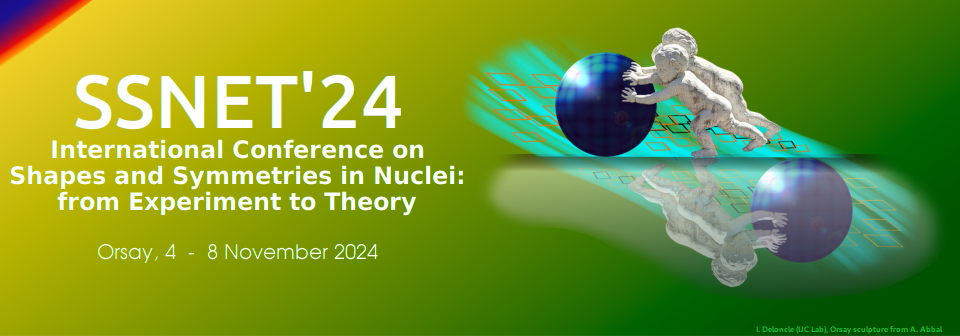Orateur
Description
Ab Initio methods aim at providing a unified description of nuclei from realistic two- and three-body interactions. The last ten years have witnessed great progresses in their range of applicability. This includes the possibility to describe higher mass systems, but also the generalization of many-body formalisms to singly and doubly open-shell nuclei. While symmetry-broken single-reference expansion methods have recently proven their ability to provide an accurate description of ground state properties up to Sn isotopes, collective properties of ground and excited (related to deformation, rotation, vibration) states are difficult to grasp through pure particle-hole expansions. For these reasons, Projected Generator Coordinate Method (PGCM) has gained a renewed interest for it's ability to naturally incorporate long range correlations in its formulation.
The ability to grasp coherently static and dynamical (long and short range) correlations in a unified formalism is a necessary step towards the unified description of ground and excited state properties of mid-mass nuclei independently of their closed and open-shell character. Adapting the recently formulated non-orthogonal perturbation theory to the nuclear many-body problem, we introduce a new formalism (coined as PGCM-PT) that consistently merges PGCM with perturbation theory. Combined with recently introduced many-body reduction of three-body interactions, it offers a promising way to tackle all even-even mid-mass doubly open-shell nuclei.
A numerical implementation if the new formalism at second order in the perturbative expansion (i.e. PGCM-PT2) has been achieved and tested on open-shell and doubly open-shell nuclei in the O-Ne region. In this talk, PGCM-PT2 formalism will be introduced and discussed. Based on the comparison between PGCM and PGCM-PT2, applications of PGCM in medium-mass systems will be presented.
References:
H. Burton and A. Thom, J. Chem. Theory Comput. (2020), 16, 9, 55865600
M. Frosini, T. Duguet, J.-P. Ebran, V. Somà, Eur. Phys. J. A 58 (2022) 4, 62
M. Frosini, T. Duguet, J.-P. Ebran, B. Bally, T. Mongelli, T. R. Rodrìguez, R. Roth, V. Somà, Eur. Phys. J. A 58 (2022) 4, 63
M. Frosini, T. Duguet, J.-P. Ebran, B. Bally, H. Hergert, T. R. Rodrìguez, R. Roth, J. Yao, V. Somà, Eur. Phys. J. A 58 (2022) 4, 64

